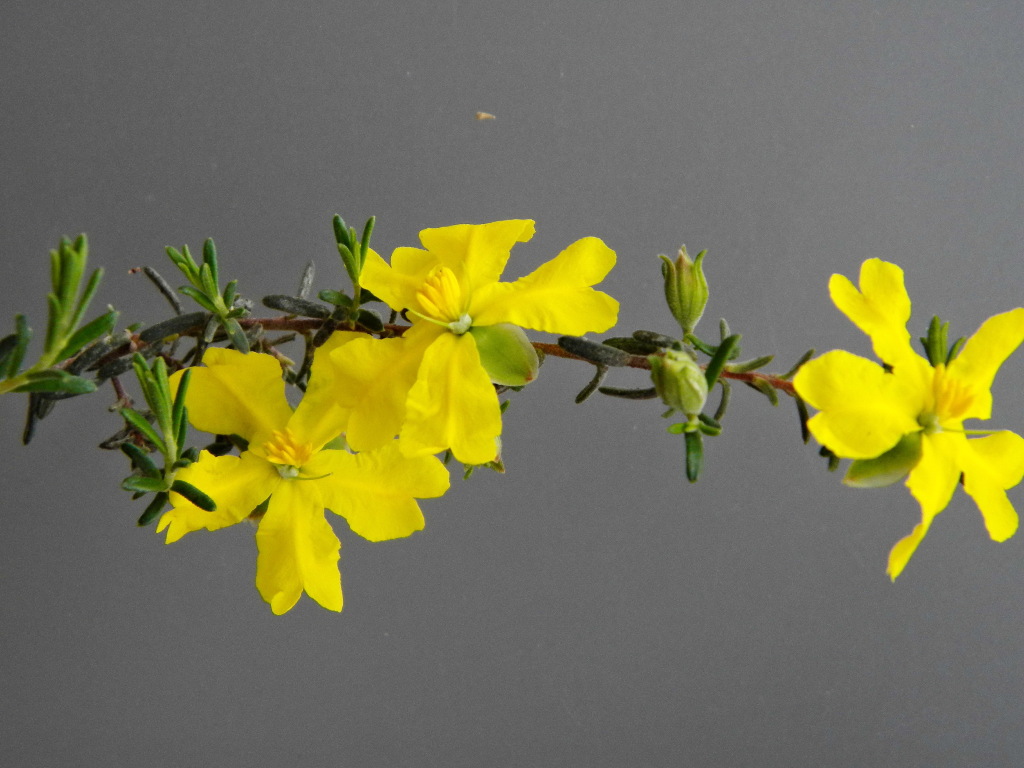Hibbertia setifera
ToelkenErect to spreading, rarely decumbent, greyish shrubs to 0.5 m high; branches pubescent to tomentose. Vestiture of tubercle-based stellate hairs with few-many, often unequal branches, occasionally with shorter forked hairs. Leaves linear to linear-elliptic, (3.2–)4–7(–9.4) mm long, 1.1–1.4(–1.6) mm wide, pubescent to somewhat hirsute; apex obtuse; margins revolute, touching the slightly raised, broader central ridge; petiole 0–0.6 mm long; leaf axils lacking or with very short tufts of hair. Flowers sessile or subsessile, terminal, subtended by few linear-elliptic bracts 3.3–4.4 mm long; sepals 5.2–5.7 mm long, subequal, tomentose to hirsute, with many much larger stellate hairs over the top of small stellate hairs; petals obovate, 4.3–6 mm long, yellow; stamens (8–)9 in one cluster; filaments free to connate basally; carpels 2, tomentose. Flowers Jun.–Dec.
MuM. Also SA. Uncommon in Victoria, apparently restricted to the mallee.
The vestiture of this species resembles that of Hibbertia australis, with leaves and the calyx appearing somewhat hirsute due to the presence of robust stellate hairs over the top of a layer of small erect stellate hairs. However, hairs on leaves of H. australis are generally not as persistent, with older leaves tending to become glabrous or sparsely hairy. More importantly, H. australis has stalked flowers, while H. setifera has sessile flowers.
 Spinning
Spinning
